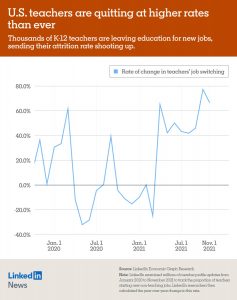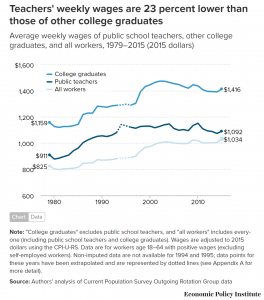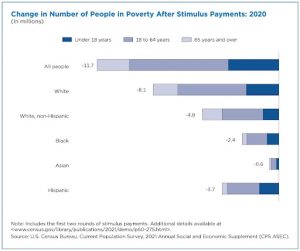by John Nelson
I was attracted to the craft brewing industry for the same reasons that so many are: The nostalgia of using centuries old techniques coupled with modern technologies. The thrill of recipe design, and watching specific ingredients come to life. The comradery of passionate beer nerds, working together with the common goal of a delicious final product. And working with your hands, controlling what you can, but letting the magic (yeast) take care of the rest.
My experience working in the industry after studying brewing science in college was no doubt rewarding and fun. Yet, I couldn’t help but eventually feel that my degree was somewhat undervalued, with mediocre wages and slim benefits, and working alongside several fellow coworkers who had no college degree. The free beer was a nice perk to start, but it quickly stopped being incentivizing when I realized what my college graduate friends were making in different industries.
I set my eyes elsewhere, and technically became a part of the infamous ‘Great Resignation’ movement, or maybe more accurately described recently as the ‘Great Reshuffling’. Only I’d be moving into an industry that was experiencing, arguably the most alarming resignation and staffing crisis of all.
You are likely thinking; aren’t most industries on staffing ‘red alert’ right now? Well, yes, many are, but maybe some more clues will help: This specific industry has been highlighted by daily news coverage since the pandemic began. There is ample footage, from all over the country of disgruntled and downright hostile citizens showing up at board meetings. And the country has been at odds as to how to conduct ‘business as normal’ throughout the pandemic.
If you haven’t guessed it by now, I’m talking about education. Yes, I wanted to become a teacher, specifically a science teacher. I mentioned ‘mediocre wages’ as being part of my decision to consider something other than brewing, and so I should just say upfront that I knew full well that a move into education would not make me rich. Rather, I viewed this career path as being more rewarding and stable (and I’d be lying if I said that the time off wasn’t enticing too).
I thought the career transition was worth a shot, and so I put in the effort to make it happen: Lengthy job applications, reference letters, and virtual interviews finally landed me a job offer for a 9th grade science teaching position. I excitedly accepted, which brought about more work in the form of testing and applications for necessary teaching licensure. Beer would now become a hobby, not a career, with a transition back to the joys of home brewing.
Long story long, I got all my ducks in a row to begin my first year of teaching high school. And I expected a challenge right off the bat: To set the stage, the school I’d soon be teaching at was in a poverty-stricken area, on a Native American reservation, where 100% of students qualified for free breakfast and lunch, and in a state with one of the worst academic performances in the US.
Embracing the last bit of summer as much as I could with biking, gardening, running and more, I was ready for the challenge that lay ahead: “This is going to kick my ass, but in a good way” I thought to myself about my soon-to-be freshman teaching job. Admittedly, I have reaped the privileges of a white skin color and growing up in a well-off family. With this new role, I’d be immersed in a setting where I was the minority, and where I could learn from the customs and cultures of the children and staff around me.
It was a sense of eager optimism to start: I would soon be making a difference, as a positive influence to many children living in poverty. Not only that, I’d be working with like-minded co-workers, or fellow appreciators of science.
Expectations Meet Reality
Here. We. Go. I was instantly submerged in the nuances of high school I had long forgotten: The pledge of allegiance starting the day, everyone around me calling me ‘Mr. Smith’, cliquey friend groups, pep assemblies, hormonal kids awkwardly flirting with each other, and many students with zero interest in actually learning the material at hand.
Though it took an adjustment to be in this environment again (this time wielding authority), it was genuinely fun and delightful to witness kids at this stage in their lives. And the anticipated workload surely did not disappoint, especially with taking nighttime teaching classes to obtain my teaching license. Nights were for lesson planning, days were for teaching and homework, and weekends were for grading and more homework.
Eager optimism turned into satisfied management for all the tasks at hand. Satisfied management then turned into anxiousness about all that needed to be done. Anxiety thinking about the next day eventually led to sleep problems. And sleep problems quickly led to full-blown insomnia.
I had never experienced anything like it before. My coworkers around me told me “you have to learn how to leave everything at the door when you go home after school”. “But why can’t I do that? Why is this all keeping me up at night?” I’d wonder, trying unsuccessfully to heed their advice, slowly turning into a zombie.
I couldn’t stop my racing mind from thinking about all of the situations at school: Transgender children being bullied (by other kids and their families), kids with parents who just died, a student on suicide watch unable to be admitted to a hospital because of COVID patients (mostly unvaccinated) occupying beds, homeless students, multiple school shooting threats, kids completely content with failing the class because no one at home cares about their grades, and of course, all of the work that still needed to be done.
Believe it or not, I needed my wife to help me understand all of the cues around me, of what this job was actually doing to me. It shouldn’t take multiple Benadryls to get to sleep. Eventually, under the direction of a Physician, I started antidepressants (a first for me) to help manage the anxiety and insomnia. Luckily this helped, but I knew I couldn’t go on like this: I saw it important to finish out the year, but after that, for the sake of my own mental health, I’d have to call it quits.
Education is in Crisis Mode and Society is turning a Blind Eye
I don’t share my experience for a personal pity party. I share it only to illustrate the stress that many of us educators are under, and the baggage that often gets brought home in this career.
Submitting a letter of resignation brought some relief, but truth be told, it doesn’t feel good to be leaving this industry, especially in this way. Instead, I feel more like a privileged rich person, fleeing the Titanic, paddling away from the scene of poor people screaming for help as they drown.
For many states, public education is a sinking ship, and we are watching it move closer and closer to the ocean floor. And maybe you’ve seen by now… I’m not the only one fleeing the ship. My high school wing of veteran teachers (and me being the only newbie) are actually a pretty accurate depiction of what we are seeing nationwide, with five of us seven teachers quitting after this school year.

“Before COVID-19, paltry salaries were supplemented by powerful nonpecuniary rewards, like the pride teachers feel when facing a classroom of smiling students eagerly engaged in dialogue. Social distancing, remote learning, and innumerable added stressors upon reopening have made it much harder to feel those rewards. All of this is compounded by the fact that educators are risking their health to teach in person, using up their sick days to quarantine, and often feeling that the leaders in charge of their working conditions do not value their safety.” (De La Cour, ‘The Great American Teacher Exodus’).
De La Cour rightfully points out that the teaching profession was headed for a downward spiral even before the pandemic. Feeling as though they are being treated as disposable, nationwide educators are collectively saying “enough is enough.”
The resulting mass departure has brought about extreme, duct-tape solutions by school districts all over the country. Several states are using Cops, National Guardsman, and parents to fill the void for substitute teachers. Many schools are maxing out available visas to bring in international teachers to address staffing shortages. And many districts are scrambling to make the career more incentivizing by upping teacher pay, offering student-debt forgiveness, or to making the licensure process easier and more affordable.
Lastly, it’s perhaps unsurprising that high-poverty areas are being hit by this crisis the hardest. Writing about the teacher shortage in 2019, the Economic Policy Institute stated that “the shortage of qualified teachers is not spread evenly among all schools but is more acute in high-poverty schools.” (Garcia and Weiss, ‘The teacher shortage is real, large and growing, and worse than we thought’). Using compiled public school data, the same EPI report concluded these four points:
- “Schools struggle to find and retain highly qualified individuals to teach, and this struggle is tougher in high-poverty schools (report #2).”
- “Low teacher pay is reducing the attractiveness of teaching jobs, and is an even bigger problem in high-poverty schools (report #3).”
- “The tough school environment is demoralizing to teachers, especially so in high-poverty schools (report #4).”
- “Teachers—especially in high-poverty schools—aren’t getting the training, early career support, and professional development opportunities they need to succeed and this too is keeping them, or driving them, out of the profession (report #5).”
Thoughts on Improvement
Not only is the current situation unsustainable, but above all, it’s not fair to our youth. As I have witnessed the educational struggles in a high-poverty school district firsthand, I’d like to focus these ‘thoughts on improvement’ for such poverty stricken areas. Bonus pay, student debt forgiveness, and waiving license fees are all steps in the right direction toward incentivizing and retaining teachers.
Financial incentives like these have been shown to work, but truth be told, money alone will not solve this: The entire educational system needs to be rethought moving forward. Below are just a few ‘foods for thought’ as we re-envision more equitable public education.
A Broken Funding System
Maybe you are aware: Property taxes play an enormous role in funding local education all around the country. Lower property values in high-poverty areas translates to lower funding for schools in those districts. Conversely, higher property taxes in wealthier areas equals more funding for wealthier school districts. This viciously inequitable cycle ensures that poor children (predominantly children of color) never have the same educational opportunities as those living in wealthier zip codes.
“Nationally, high-poverty districts spend 15.6 percent less per student than low-poverty districts do, according to the U.S. Department of Education. Lower spending can irreparably damage a child’s future, especially for kids from poor families. A 20 percent increase in per-pupil spending a year for poor children can lead to an additional year of completed education, 25 percent higher earnings, and a 20-percentage-point reduction in the incidence of poverty in adulthood, according to a paper from the National Bureau of Economic Research. (Semuels, ‘Good School, Rich School; Bad School, Poor School’).
If equitable education in the US is ever to be achieved, the federal government must step in to ensure equal funding. The ramifications of under-funded education systems have far-reaching societal effects, and study after study concludes that investing in education pays off.
“A good education provides substantial benefits to individuals and, as individual benefits are aggregated throughout a community, creates broad social and economic benefits. Investing in public education is thus far more cost-effective for the state than paying for the social and economic consequences of under-funded, low quality schools.” (Mitra, ‘The Social and Economic Benefits of Public Education’).
Unappealing Salaries
While we’re on the topic of money, let’s visit this wise quote from Mr./Mrs. Unknown: “Invest in people who invest in you.” We just mentioned the societal benefits that come from adequately investing in education, yet most of America inadequately compensates its teachers.
A 2016 study by the Economic Policy Institute highlights this disinvestment in teachers: “The teacher pay penalty is bigger than ever. In 2015, public school teachers’ weekly wages were 17.0 percent lower than those of comparable workers—compared with just 1.8 percent lower in 1994.” (Allegretto and Mishel, ‘The teacher pay gap is wider than ever’).
Mentioned earlier, financial incentives work in retaining qualified teachers. If we want to reap the societal benefits that come from hiring qualified teachers, we simply need to start by valuing them more, and thus paying them more.

Increased ‘Stressors’
Every job has them (I think?), but especially during COVID, some uniquely aggravating ‘stressors’ were brought about for teachers: Mask policing, quarantined students never bothering to complete classwork, or hostile anti-maskers at school board meetings. Let’s set those aside and instead envision a COVID-free world: Ahh, that’s nice, isn’t it? Yes, but unfortunately this career is still chock-full of stressors.
Drooling over the time off that this career provided before I started, I naively thought “it must be worth all of the stress for all of that time off.” And at one point, simple satisfaction from the job, and the time off were worth the daily stress for many of our teachers. But obviously, in a mixture of reasoning, teachers are now overwhelmingly saying “no, it’s not worth it.”
Added stressors to an already stressful job understandably increases the tension. Set aside obvious ones, like teachers being asked to do more and more amid staffing shortages, or the tedious purchasing practices teachers must follow to buy simple classroom materials (which result in many teachers saying “screw it, I’ll use my own money”). I’d like to focus on one that has been tied to our system for quite some time: A national obsession with graduation rates and test scores.
Congressional acts like ‘No Child Left Behind’ and ‘Every Student Succeeds’ were well intentioned legislation to improve elementary and secondary education. As is the case with most legislation signed into law, there are pros and cons. Among top concerns for NCLB and ESS, is the fixation with standardized testing and school graduation rates.
There is indisputable ‘blowback’ when districts are pressured to increase test scores and graduation rates. What I see firsthand as a secondary teacher is the constant push from our school district to ‘pass’ as many students as possible. Little Suzie can technically ‘pass’ freshman year science with failing Quarter 1, failing the final exam, but getting a D- for Quarter 2. This lowering of the bar (until it is basically on the floor) does little to prepare our youth for the future.
Rather than trying to inflate test scores, or moving students on to the next grade by lowering the standards, let’s find a different path for them to succeed. Perhaps they need more one-on-one attention or thorough instruction. Or perhaps they are better off on a completely separate educational course than some of their classmates: Could they succeed in a Trade-focused program? What about the Arts? Conforming the student to beat the system has become the name of the game: What if we instead focus on their needs and interests?
Lastly, regarding testing and graduation rates, I’d be remiss if I didn’t mention the Bill and Melinda Gates education ‘experiment’. In this striking display of neoliberalism, the Gates Foundation, wheedling enormous political influence, and of course money (theirs, plus taxpayers), were given the okay to fundamentally change education through increased standardized testing, implementation of ‘Common Core’ standards, and scrupulous teacher evaluations.
By most accounts (including the Gate’s Foundation’s), the experiment was a failure. The lesson? We need to learn from trusting a billionaire more than educational professionals to make positive changes to the educational system.

The Dire Need for Social and Emotional Professionals and Educational Incentives
In my classroom, in the hallways, in the cafeteria, I see so much sadness on children’s faces. Most of them come from poor families. Many of them only eat when they are at school. Some of them are homeless. And almost all of them have working parents or guardians.
The result is that many students simply do not come to school. And if they do, many of them have no motivation to work. I’d like the educational system to step in and say: “We care about you, and we care about your future.”
“Concerns about children and youth as they return to school have been focused on the narrow idea of “learning loss” and not on the needs of the whole child — not on their physical, emotional, social, and mental health needs, and not even on their genuine learning needs.” (De La Cour, ‘The Great American Teacher Exodus’).
Especially during a once a century pandemic, we can’t ignore compounded student social and emotional needs. Educating children simply isn’t possible when their home lives are unstable, they are suffering from mental illnesses like depression or anxiety, or they don’t feel safe going to school.
I hear it often from fellow educators that parents and guardians need to be held more accountable. To some extent this may be true, but the educational system cannot do much to fix problems with parents or guardians living on poverty wages, or parents and guardians with substance abuse issues. There are other institutions that exist for those reasons. But what education can do, is focus on all of the needs of the child, including, arguably of utmost importance, their social and emotional needs.
We need to think about increased roles for school psychologists or counselors for this reason. How can we incorporate social and emotional professionals into students’ lives more often? Every student’s needs will obviously vary, but having more of a presence of these trained professionals to care for the individual student would go a long way, especially in high poverty areas.
Lastly, how do we get more students to come to school? Addressing social and emotional needs could be a start, but would you ever consider a financial incentive for children to go to school? Well, several studies have examined that same question, and several countries are already paying kids or their families to go to school.
There is no doubt that this is a controversial idea, with many who would argue that obtaining an education should be enough of a motivator. But we’re seeing that that driver alone is not enough. And it’s worth mentioning that this could be another mechanism in the fight against poverty. We saw during COVID, that stimulus payments directly benefited in pulling people out of poverty. What might educational stimulus do to poverty rates in the long run?

Conclusion
In part, this is a broader story of wages and benefits often not cutting it for the bottom and middle class. We know this is hardly an issue specific to education, with ample examples in our very own brewing industry. With children’s psychological needs and massive societal effects at stake, ignoring the broken education system is no longer an option.
I mentioned that it doesn’t ‘sit right’ leaving public education, feeling as though I did little to help. But what does feel good is advocating for a better functioning system. One where educational professionals are respected, and shown this respect with appropriately reflected wages and the care they deserve. And one where students are looked at as human beings, and not as performance percentages.
After this experience, my gratitude towards educators is through the roof. And I hope that this piece gives you more appreciation for your local educators and all that they do for your communities. Who knows, maybe one day they’ll inspire a child to excel in the math and science needed to start a world-class brewery.
Sources
Content:
- ‘The Great American Teacher Exodus’
- ‘The teacher shortage is real, large and growing, and worse than we thought’
- ‘Good School, Rich School; Bad School, Poor School’
- ‘The Social and Economic Benefits of Public Education’
- ‘The teacher pay gap is wider than ever’
Pictures:
- ‘Teachers sprint into new careers, amid a 66% rise in school-job departures’
- ‘The teacher pay gap is wider than ever’
- ‘Teachers protest in downtown Seattle, say Bill Gates is ruining education’
- ‘Two Rounds of Stimulus Payments Lifted 11.7 Million People Out of Poverty During the Pandemic in 2020’





